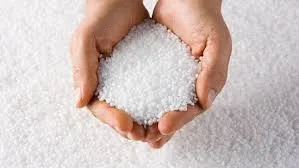Physico-Chemical Treatment of Wastewater An Overview
Wastewater is an inevitable byproduct of various human activities, including industrial production, domestic usage, and agricultural practices. The treatment of wastewater is essential to protect human health and the environment from the harmful consequences of untreated effluents. Among the various treatment methods available, physico-chemical treatment stands out as a vital approach for the removal of pollutants through physical and chemical processes.
What is Physico-Chemical Treatment?
Physico-chemical treatment encompasses a variety of techniques that utilize physical and chemical means to remove contaminants from wastewater. This method is particularly effective for addressing soluble and suspended pollutants, heavy metals, and other undesirable compounds. The physico-chemical processes can be broadly categorized into four primary operations coagulation and flocculation, sedimentation, filtration, and adsorption.
The Key Processes Involved
1. Coagulation and Flocculation This initial step involves the addition of chemical coagulants, such as aluminum sulfate or ferric chloride, to the wastewater. These chemicals neutralize the charges on suspended particles, causing them to aggregate and form larger particles called flocs. Flocculation may be enhanced by gentle stirring, allowing for further collision and agglomeration of flocs.
2. Sedimentation Following coagulation and flocculation, the wastewater enters the sedimentation tank, where gravity plays a crucial role. The larger flocs settle at the bottom, forming a sludge layer, while the clarified water rises to the top. This separation of solids from liquids is a critical step in reducing the total suspended solids content of the effluent.
3. Filtration The next step typically involves passing the clarified water through various filtration methods to remove smaller particles and suspended solids that remained after sedimentation. Common filtration techniques include sand filtration, activated carbon filtration, and membrane filtration, each with its own benefits and applications.
4. Adsorption This process involves the use of adsorbents, such as activated carbon or ion exchange resins, which attract and bind pollutants to their surface. This is particularly useful for removing organic compounds, heavy metals, and other trace contaminants, effectively improving the overall quality of the treated wastewater.
Advantages of Physico-Chemical Treatment
physico chemical treatment of wastewater

The physico-chemical treatment of wastewater offers several notable advantages
- Efficiency This treatment method can simultaneously address multiple types of contaminants, achieving significant reductions in pollutants, such as biochemical oxygen demand (BOD), total suspended solids (TSS), and pathogens
.- Space Requirement Compared to biological treatment methods, physico-chemical processes often require less space, making them suitable for industrial facilities with space constraints.
- Fast Operation The treatment processes are relatively quick, permitting rapid deployment and turnover of treated wastewater, which is increasingly crucial in water-scarce regions.
- Versatility Physico-chemical treatment can be applied to a wide range of wastewater types, from municipal to industrial effluents, providing flexibility in its application.
Challenges and Considerations
While physico-chemical treatment is highly effective, it is not without its challenges. The cost of chemicals used for coagulation and flocculation can be significant, and proper dosing is critical to optimize performance. Additionally, the treatment generates sludge that requires careful management and disposal. This can create additional operational considerations and costs.
Moreover, physico-chemical treatment does not eliminate all contaminants, especially certain dissolved pollutants or micro-pollutants. Thus, it is often employed as a pre-treatment step or in conjunction with biological methods for a more comprehensive treatment approach.
Conclusion
In conclusion, physico-chemical treatment of wastewater is a crucial process in the management of water resources, offering a viable solution for reducing pollutants in various types of effluents. While it presents certain challenges, the benefits of efficiency, rapid operation, and versatility make it an essential component of modern wastewater treatment strategies. As global water scarcity intensifies, the continued development and optimization of the physico-chemical treatment processes will play a pivotal role in ensuring sustainable and effective wastewater management.

